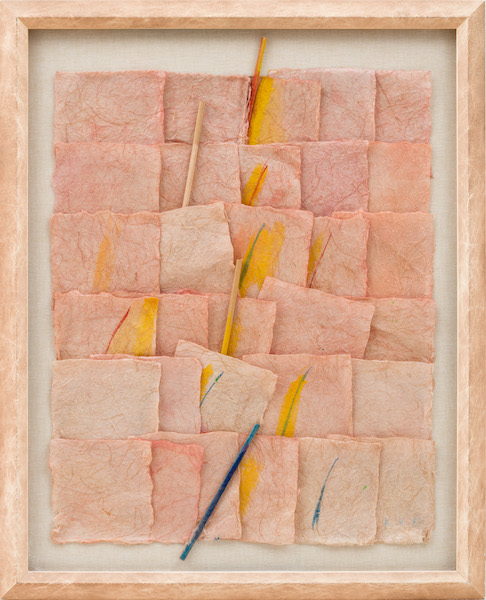Biography
Klára Kuchta was born in 1941 in Rozsnyó. In 1947, due to the deporations in Felvidék, they had to move to Hungary with their families. She begin with studying sculpture and attended private lessons of Pál Pátzay in Epreskert. In 1955, she met Noémi Ferenczy, as a result of which she fell in love with weaving, and applied to the College of Applied Arts in Hungay. From 1963 to 1968 she continued her studies at the textile department of the Hungarian College of Applied Arts. According to Kuchta, even under socialism, textile artists were given much more room to experiment than painters and sculptors who were forced to follow a Soviet model.
Kuchta took an active part in the formal and conceptual renewal of the Hungarian textile art of the late sixties, which allowed the medium to grow beyond its traditionally decorative judgment and become a channel for abstract artistic expression, thus resisting the socialist realism supported by the official aesthetic ideology. In 1969, he took part in the second Industrial Design Exhibition, where Géza Perneczky predicted an encouraging future for the artist. However, Kuchta could not succeed in socialist Hungary, emigrating to Geneva in 1971. She gained international recognition thanks to the Biennale de la Tapisserie, a tapestry biennial in Lausanne, where she exhibited in the company of artists such as Denise Emery, Magdalena Abakanowicz and Jagoda Buić.
Even the early Kuchta works, made in 1968-1969, avoid all sorts of formal references: they mix the materials and textures used, still evoking an ancient tribal weaving culture. However, her works in the early 1970s already turn to the surface of matter with an organic sensuality that suggests Kállai's theory of bioromantics. Her later pieces experiment with the possibilities of spatial shaping of textiles, further enhancing the organic effect through their plasticity. Their most direct formal analogy is the female body and its intimate parts, paving the way for interpretation from a feminist discourse as well.
Klára Kuchta’s art took a conceptual turn when she formulated her Socio-Economic Art Manifesto in 1974 and began a cycle dedicated to the study of hair history, culture, gender, social and economic perspectives. At first, she used hair as a raw material for his weaves and paintings, forming a transition between her textile works and her conceptual period, and then her work gradually shifted to a socially critical approach to hair through his series of photographs, performances and video works.


